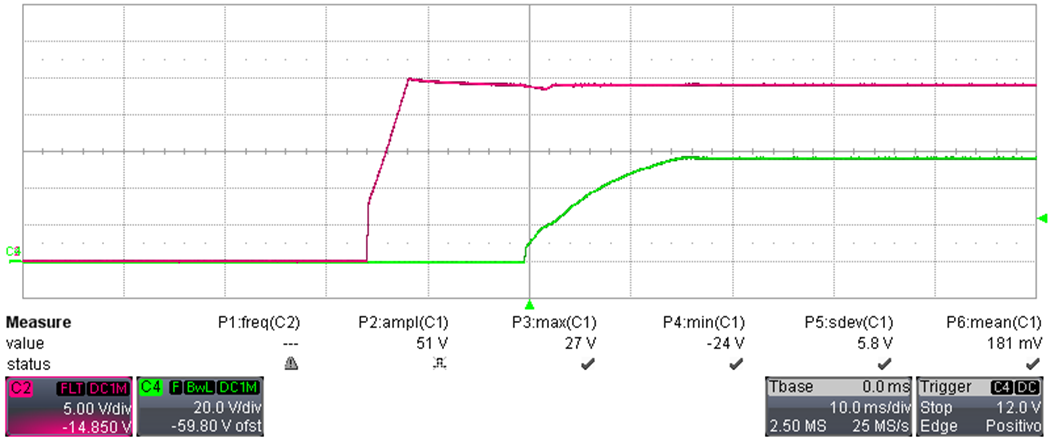TIDT308 October 2022
3.4.2 Zero Load
 Figure 3-8 Start-Up With Zero
Load
Figure 3-8 Start-Up With Zero
Load- Channel C2: Input voltage (5 V/ div, 10 ms / div, DC coupling, 20-MHz BWL)
- Channel C4: Output voltage (20 V/ div, DC coupling, 20-MHz BWL)
TIDT308 October 2022
 Figure 3-8 Start-Up With Zero
Load
Figure 3-8 Start-Up With Zero
Load